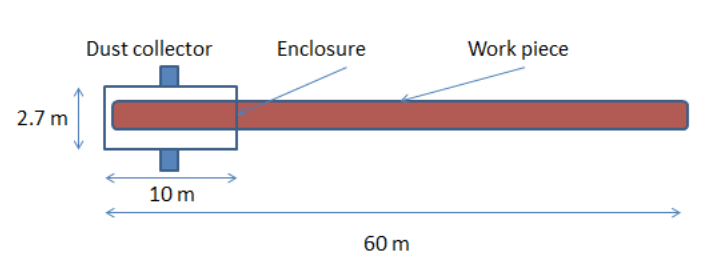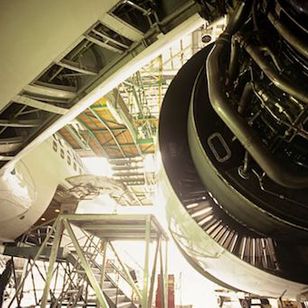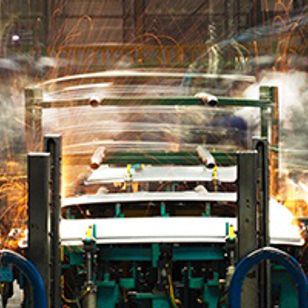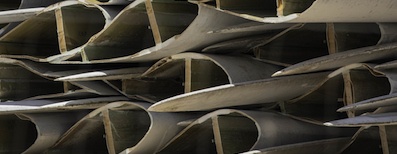Dust Control Solutions for Wind Turbine Rotor Blade Manufacturing
Wind turbine rotor blade manufacturing involves incessant grinding passes that create large quantities of particulate and require innovative dust control solutions.
Rotor blades usually range between 30 and 60 meters long. Made by layering thousands of thin filaments impregnated with epoxy resin, the rotor blades have to be reduced to the proper dimensions and prepared to accept the next layer of material via grinding, often on a daily basis.
Each typical grinding pass can discharge up to one kilo of dust. Sometimes, though, a defect is detected and needs to be ground out, which can result in up to 15 kilos of dust comprising dried resin, glass, plastic, wood, aluminum, and steel, depending on the construction of the rotor blade.
With such frequent grinding and such large work pieces, it isn’t feasible to transport a wind turbine rotor blade to a booth where it can be contained and worked on. The material handling logistics are too disruptive and installing a booth big enough to accommodate a massive wind turbine rotor blade would almost require a separate facility (as well as significant capital expenditure).
This has led many wind turbine rotor blade manufacturers to resort to grinding out on the open floor of their facilities, using centralized dust collection systems with extraction arms to capture the particulate. While somewhat effective, this approach can leave up to 70% of the dust in the shop environment, compromising employees, machinery, and general HVAC systems.
To address this issue, a new dust control solution is needed — one that brings the containment offered by a fixed booth to the work piece. Here are two strategies that can be used to accomplish that, both of which involve retractable enclosures.
Two Dust Control Solutions Using Retractable Enclosures
The two dust control solutions for wind turbine rotor blade manufacturing reviewed here obey the same underlying principles: enclose the work piece and capture the dust produced by grinding.
The first strategy is to contain just the work area and then move the enclosure as the work advances down the blade length. The second approach is to contain the entire blade, avoiding any need to move the retractable enclosure.
Solution 1 – Work Area Enclosure
A mobile retractable enclosure 10 meters long with a non-vented air filtration system mounted on each side can be moved into place to contain a grinding work area.
For turbine rotor blades on the shorter end of the spectrum (30–40 meters), a retractable enclosure like this would have to be set up and moved three to four times. Longer blades (50–60 meters) could require up to six setups.

Moving and setting up a retractable enclosure takes approximately 30 minutes, meaning those multiple iterations can add up to two to three hours of production time.
However, this arrangement can be engineered to be completely mobile so that it can be moved around a shop floor and deployed where needed.
Solution 2 – Total Enclosure
To avoid the headache — and lost labor time — of multiple setups, a simple dust control solution is to opt for a retractable enclosure long enough to encapsulate entire work pieces.
This sort of setup typically requires a larger dust collector unit that has enough draw to extract all the dust released throughout the entire length of the enclosure. Because of this, it has to be fixed in a space adjacent to the area where grinding work will take place, although the retracted unit can be engineered to occupy only a fraction of the floor space of the extended enclosure (approximately 20%).

While this setup requires moving the work piece to the area where the enclosure can be opened to contain it, the extension process takes just several minutes.
Conclusion
Retractable enclosures, coupled with the right air filtration devices, can become efficient dust control solutions for unusual manufacturing situations involving large work pieces, such as those used to produce wind turbine rotor blades.
To find a tailored dust collector solution for your wind turbine rotor blade manufacturing facility that will contain dust in your facility and protect your employees, machinery, systems, and lead time, request a consultation with a Duroair expert.




